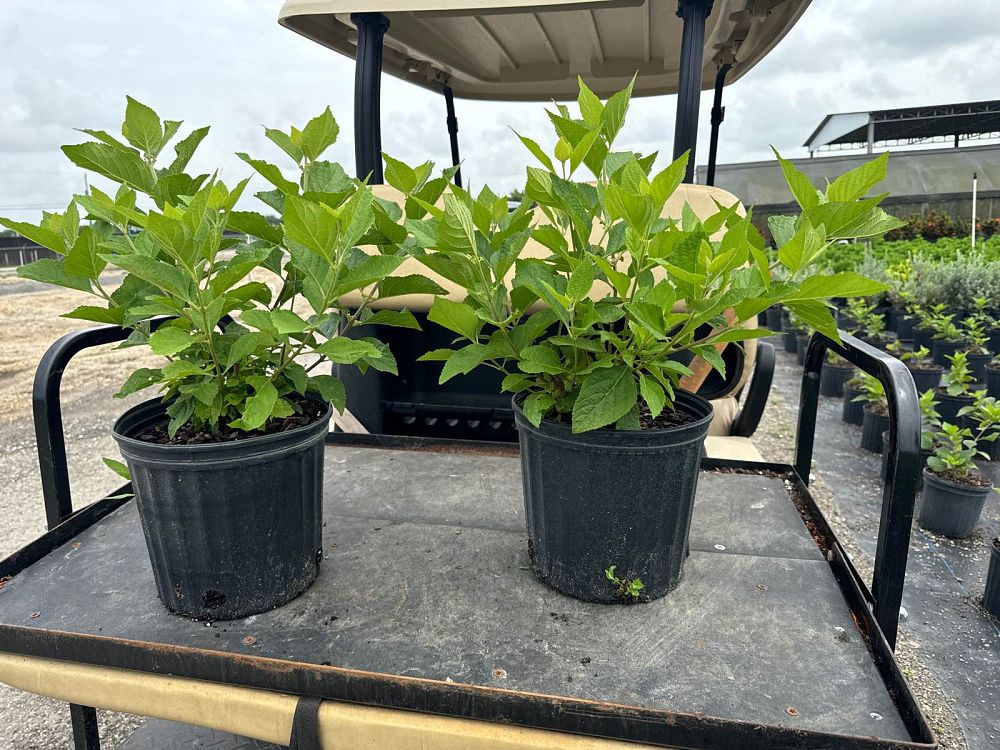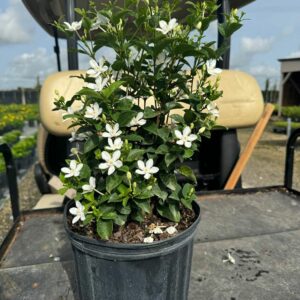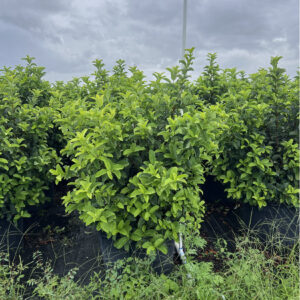American Beautyberry
Callicarpa americana, or American Beautyberry, is a deciduous shrub that typically grows 3 to 6 feet tall (up to 8 feet in ideal conditions) and spreads 4 to 6 feet wide. It features large, serrated green leaves, small pale pink to lavender flowers, and vibrant purple berries that attract birds. Hardy in USDA zones 6 to 10, this shrub is ideal for borders, mass plantings, and wildlife gardens. The berries are edible, often used in jams and jellies. Overall, it offers aesthetic appeal and ecological benefits.
$22.63
Related products
-
All Products
Asian Snow Jasmine
$24.90 This product has multiple variants. The options may be chosen on the product page -
All Products
Viburnum Odoratissimum
$15.32 – $262.50 This product has multiple variants. The options may be chosen on the product page
Callicarpa americana (American Beautyberry)
Common Names: American Beautyberry, French Mulberry
Size and Growth
Height: Typically grows 3 to 6 feet tall (0.9 to 1.8 meters), but can reach up to 8 feet (2.4 meters) in ideal conditions.
Spread: Can spread 4 to 6 feet (1.2 to 1.8 meters) wide.
Growth Rate: Moderate to fast-growing.
Appearance
Bark: Smooth, grayish-brown bark with a somewhat rough texture.
Leaves: Large, ovate, and serrated leaves, usually green, with a simple arrangement.
Flowers: Small, pale pink to lavender flowers that appear in clusters from late spring to summer.
Fruit: Vibrant purple berries that develop in clusters and persist into fall, attracting birds and wildlife.
Landscaping
Uses: Excellent for borders, mass plantings, or as a natural hedge; great for wildlife gardens.
Soil: Prefers well-drained, moist soils but is adaptable to various soil types.
Watering: Tolerates drought once established but benefits from regular watering during dry spells.
Hardiness Zone
USDA Zone: Hardy in zones 6 to 10, thriving in a range of climates from the southeastern U.S. to parts of Texas.
Fun Fact
The bright purple berries are not only attractive but also edible, often used in jams and jellies, though they are best when cooked.
Additional Info
Ecological Role: The berries are a food source for birds and other wildlife, while the flowers attract pollinators like bees and butterflies.
Cultural Significance: Used in traditional medicine and as a foraging plant.
Overall, the American Beautyberry is a versatile and attractive shrub that enhances gardens while providing food and habitat for wildlife.
| Size | 3 Gallon |
|---|



